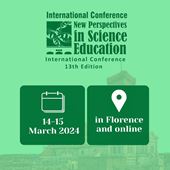The Impact of the Curriculum on the Teaching of Integrated Learning (Inquiry) Time the Effects of Changing Attitudes and Developing 'STEAM Education Skills'
Kenichi Goto, Toyo University (Japan)
Mika Tsuyukubo, Toyo University (Japan)
Yorikazu Nouchi, NIhon University (Japan)
Katsuji Ito, University of Teacher Education Fukuoka (Japan)
Hiroshi Iida, Tenryu High School, Shizuoka Prefecture (Japan)
Yoshida Tomoko, Ajime High-School (Japan)
Yoriko Ikuta, Nara Prefectural Seisho Junior and Senior High School, Japan (Japan)
Sanai Katsuko, National Institute for Educational Policy Research (Japan)
Abstract
In Japan, the Courses of Study, which will be fully implemented from 2022, set up "time for integrated learning (inquiry)" [3] in elementary, junior high and senior high schools, which integrates learning in academic subjects and other subjects. This is against the background of the promotion of 'Japanese-style school education in 2021' [1], the enhancement of STEAM education [2] and the aim to contribute to the SDGs through school education. To realise this, the Ministry of Education, Culture, Sports, Science and Technology (MEXT) has established "Teaching Methods for Integrated Study (Inquiry) Time" as a teaching subject at universities, and teacher training that enables teaching in school education is being promoted. Therefore, in this study, we would like to examine what kind of changes in awareness there are in students who have worked on the 'Methods of teaching time for integrated learning (inquiry)', including how the 'three qualities and abilities' that are shown in the 'STEAM educational ability' as qualities and abilities to be fostered are transformed.In this study, the three qualities and abilities to be developed are (i) the ability to step forward, (ii) the ability to think through, and (iii) the ability to collaborate, each of which also has a subcomponent.The curriculum for the "Integrated Learning Time Teaching Method" implemented in this report consists of 15 lessons, and the lesson plan calls for a pre- and post-awareness survey and overall information sharing (3 lessons), as well as experiential learning (4 lessons), mid-term reporting (2 lessons), lesson development (4 lessons), final reporting (2 lessons) and making a video clip of about 8 minutes.
 New Perspectives in Science Education
New Perspectives in Science Education





























